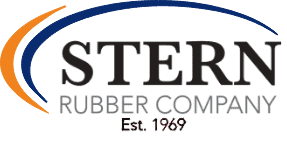Here at Stern Rubber, we pride ourselves in being able to offer many types of materials to a support a wide variety of customers. From Fluoroelastomers to Polyurethane, Stern offers many different types of material for to our customers, and one of those materials is epichlorohydrin.
Epichlorohydrin is an organo-chlorine compound and an epoxide that in natural form is a colorless liquid, with a pungent odor, that is moderately soluble in water. Epichlorohydrin is a highly reactive compound, and is used in the production of glycerol, plastics, epoxy glues, resins, and elastomers. Epichlorohydrin was first discovered in 1848 by Marcellin Berthelot, while doing studies on reactions between glycerol, and gaseous hydrogen chloride. During the reaction process, Berthelot observed that the compound Epichlorohydrin was left isolated following the reaction of the other two materials.
Epichlorohydrin is manufactured today from allyl chloride in two steps, beginning with the addition of hypochlorous acid, which is the mixture of two alcohols. In the second step, the alcohol structure is then treated with a base to form an epoxide. This technique is the most common and is used to produce nearly 800,000 tons of epichlorohydrin annually. Although this is one method of producing epichlorohydrin, companies like Dow chemical have found another method that uses recycled glycerol. Glycerol, which is a co-product of biodiesel production, is a waste product that is very difficult to dispose of. Yet by dechlorinating the glycerol, and then mixing the dichlorohydroxypropane compound with a base, epichlorohydrin is formed. Although this process is resourceful, the rapid increase of biodiesel production has led to an excessive amount of glycerol, making the process somewhat uneconomic. So companies like Dow have switched to using synthetic glycerol base epichlorohydrin, for only sensitive pharmaceutical, technical, and personal care products.
Today, epichlorohydrin has many useful applications and is used as a versatile precursor in the synthesis of many organic compounds. One use of this method is the conversion of epichlorohydrin to glycidyl nitrate which is used in explosives and propellants. Along with this form, epichlorohydrin is also used as a solvent for cellulose, resins, and paint, as well as insect fumigant. Polymers and elastomers of the material are also very common and used in paper reinforcement, and water purification, as well as in the production of tea bags, coffee filters, and sausage casings.
Of course, here at Stern, we use epichlorohydrin rubber or ECO, which is a synthetic rubber made from epichlorohydrin. It has properties similar to nitrile rubber, but with better heat, oil, and gasoline resistance. It has low gas permeability, and better low temperature flexibility than nitrile. It has excellent resistance to acids, alkalis, and ozone. A few common applications include automotive hoses, air ducts, and diaphragms. It is also used in laser printer rolls and vibration dampening devices. We use it to manufacture throttle body adaptors and air inlet hoses for snowmobiles, ATV’s, and motorcycles.
Here at Stern Rubber, we use epichlorohydrin from Zeon.
Now, although this type of material is very effective, we also use many other types of rubber to produce our products. So, remember, Stern Rubber is always available to help with your material selection. Check out the engineering resources section for more information on materials, which includes a material selection guide.
